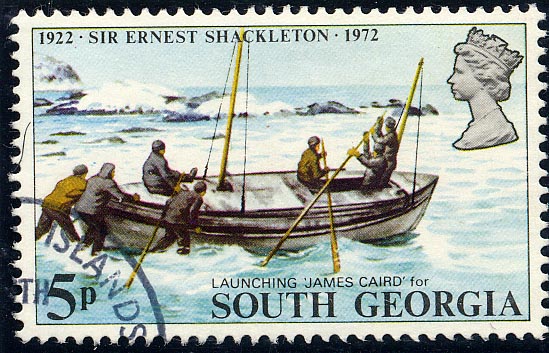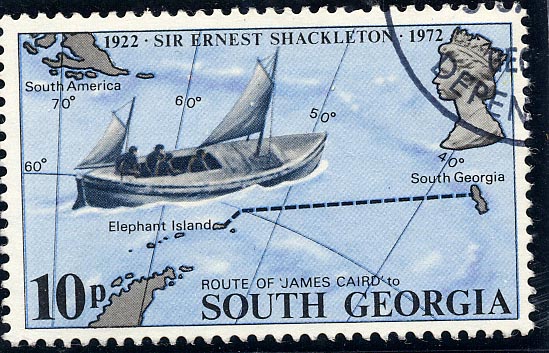

The James Caird was the largest of the three ship's boats carried on the Endurance which left Millwall Dock, London, for the Antarctic on August 1, 1914, calling at Plymouth, and leaving there later the same month.
The expedition's principal benefactor was Sir James Caird, who donated the munificent gift of £24,000 to the expenses. The ship's boat was named in his honour. It was in this boat that Shackleton made a voyage of nearly 800 miles in the worst possible Antarctic weather to reach South Georgia and so bring help to his party stranded on Elephant Island.
The boat was only 22 ft. long, an ordinary ship's whaler. In order to make the boat more secure for the perilous journey, McCarthy, the carpenter of the expedition, had to contrive some sort of covering for the James Caird if she was to survive. This he did with the only means available to him. He had not enough wood to provide a deck, so he used sledge runners and box lids from the stores to make a framework extending from the forecastle aft to a well.
It was a patched up affair, but it provided a base for a canvas covering. This was screwed and nailed into position and certainly gave an appearance of safety to the boat. The mast of another ship's boat, the Stancomb Wills, was fitted fore and aft inside the James Caird as a hog-back, and thus strengthened the keel with the object of preventing the boat from buckling in heavy seas.
The covering served its purpose well for Shackleton wrote, "Without it we certainly could not have lived through the voyage". The ballast in the boat weighed 1,000 lb., and in addition a number of round boulders, and a good deal of ice supplemented two casks of water.
Stores taken in the James Caird, which would last six men for one month were as follows:
30 boxes of matches; 64 gallons of paraffin; one tin methylated spirit; 10 boxes of flamers; one box of blue lights; two Primus stoves with spare parts and prickers; one Nansen aluminium cooker; six sleeping bags, a few spare socks; a few candles and some blubber in an oil-bag.
Food for the voyage consisted of three cases sledging rations (300 rations); two cases of nut food (200 rations); two cases of biscuits (600 biscuits); one case, lump sugar; 30 packets of Trumilk; one tin of Bovril cubes; one tin Cerebos salt; 36 gallons of water; 112 lb. of ice.
Instruments: sextant, binoculars, prismatic compass, sea-anchor, charts and an aneroid.
Watch duties were four hours on and four hours off, three men to the watch. One man had the tiller ropes, the second man had the sail and the third bailed for all he was worth. Ice clinging to the boat became a danger to it and made it more like a log than a boat. It lost its resiliency. Spare oars frozen to the side of the boat had to be broken and thrown overboard, and two fur sleeping bags, weighing 40 lb. each were thrown overboard to reduce weight.
Eventually they reached King Haakon Bay in South Georgia. The story of how they climbed a range of mountains to reach the whaling station at Stromness, and the rescue of the stranded party on Elephant Island by the Chilean ship Yelcho has been told before. (See under Yelcho) Readers who would like to read a full account of the epic story of the 1914-1917 Shackleton Expedition cannot do better than read the book "South," written by Sir Ernest Shackleton and published by Heinemann.
SG33, 34. Sea Breezes 3/72
